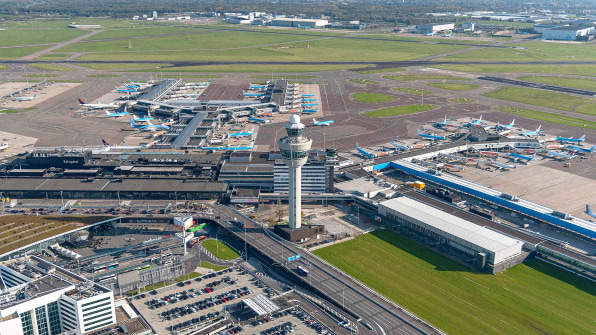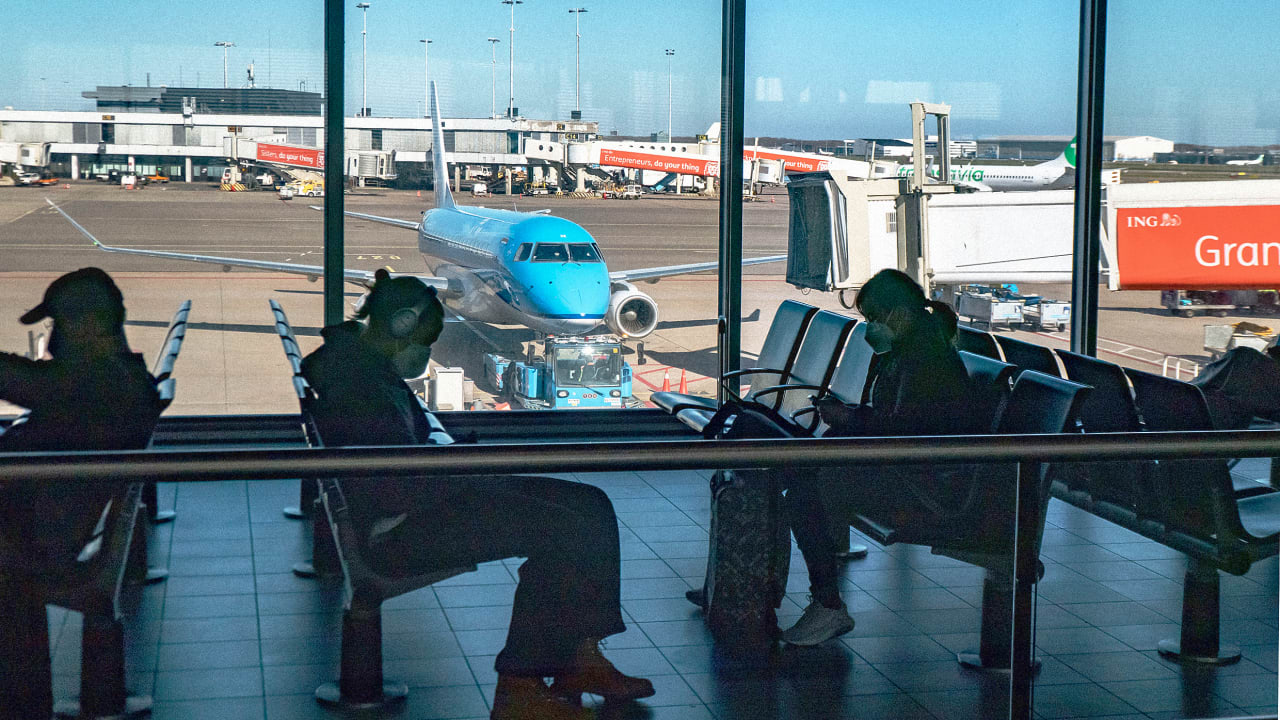Schiphol is the third-largest airport in Europe, but it plans to shrink instead of grow.
Beginning in late 2023, Amsterdam’s Schiphol Airport will have fewer flights than it did before the pandemic. The Dutch government is capping the number of flights that are allowed per year to help reduce pollution—making the airport the first in the world to limit flights in response to climate change.
The country’s transportation minister said that he wants Schiphol to keep its role as a hub in Europe, where it’s the third-largest airport. But he said that it was also critical to pay attention to the negative impacts aviation has on people and the environment, from noise and local air pollution to greenhouse gases.

Right now, the airport can schedule half a million flights per year; a previous plan would have bumped that up to 540,000. Instead, it will drop to 440,000.“Reducing the number of flights is [the] main way to cut pollution from aviation,” says Maarten de Zeeuw, a climate and energy campaigner for the Netherlands office of Greenpeace. The industry is responsible for around 2% of global emissions now. While some new technology is in development, including electric planes for short flights, and some airlines are beginning to use lower-carbon fuels, it’s challenging to decarbonize—and cutting flights is feasible right now, de Zeeuw says.
“Research shows that people expect to fly less after the pandemic,” he says. “We simply do not need all those flights anymore.” The Amsterdam airport also currently has flights to such cities as London and Brussels, which can be reached on relatively short train trips. It’s unlikely that the new limits will lead to many more flights at nearby airports, since each airport has limited capacity to take on more.
It’s not clear yet exactly how much climate pollution the change will eliminate, since it will depend on the specifics of each flight that’s eliminated; long flights pollute more than short ones, for example. But de Zeeuw argues that the airport still hasn’t gone far enough to fully address climate change. “The aviation sector needs to make a climate plan that is in line with the Paris Agreement and the 1.5 degree objective . . . and then decide how many flights are still possible,” he says.
—
Guest Author: Adele Peters is a staff writer at Fast Company who focuses on solutions to some of the world’s largest problems, from climate change to homelessness. Previously, she worked with GOOD, BioLite, and the Sustainable Products and Solutions program at UC Berkeley.
This article first appeared in www.fastcompany.com
Seeking to build and grow your brand using the force of consumer insight, strategic foresight, creative disruption and technology prowess? Talk to us at +971 50 6254340 or engage@groupisd.com or visit www.groupisd.com/story

